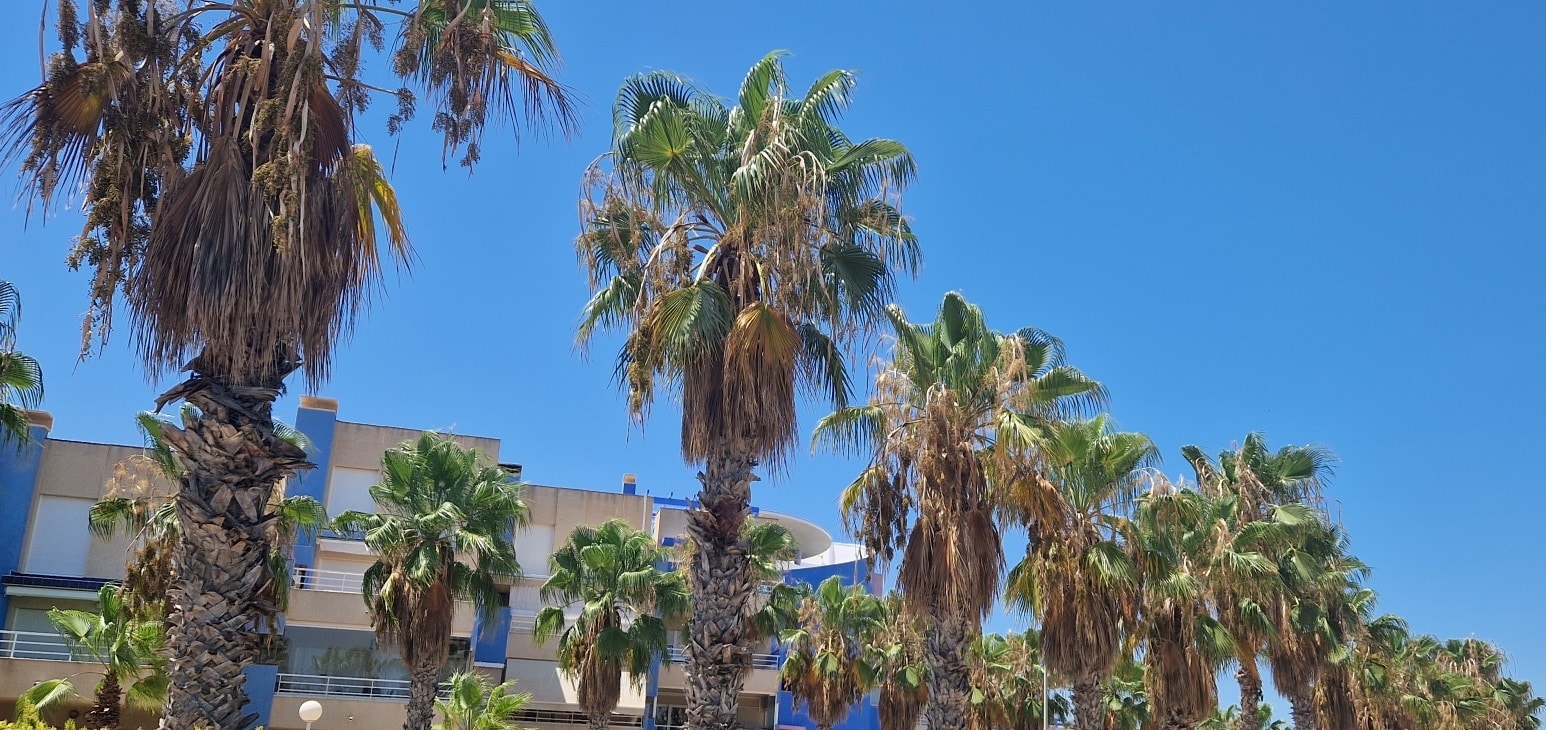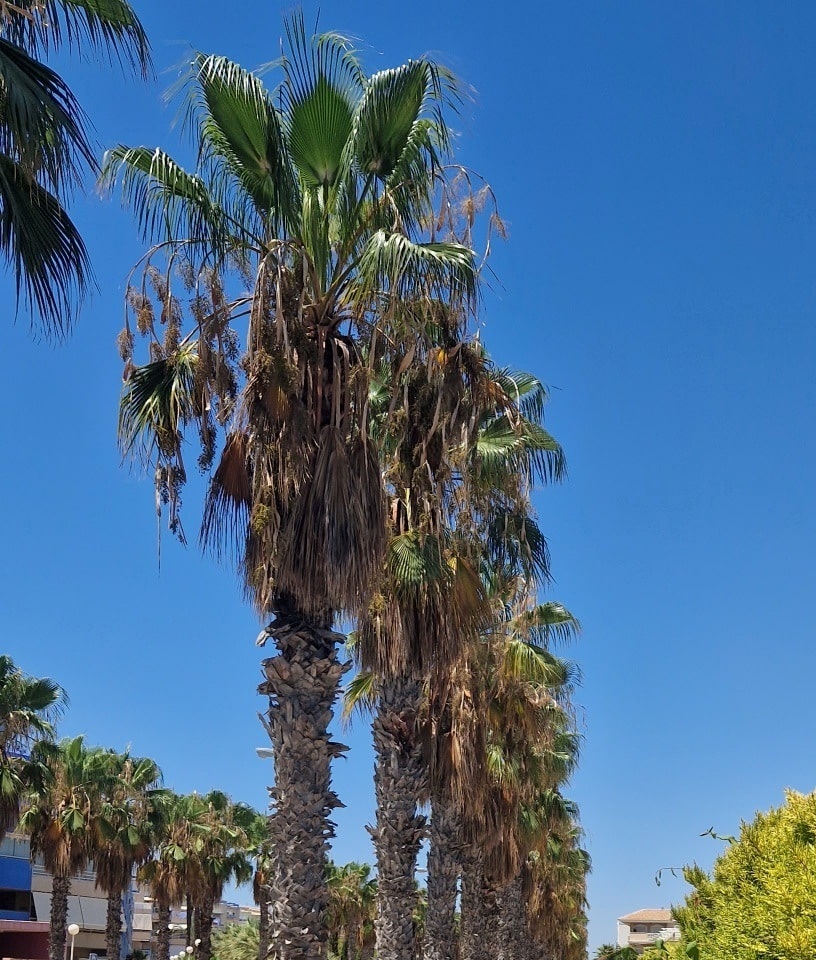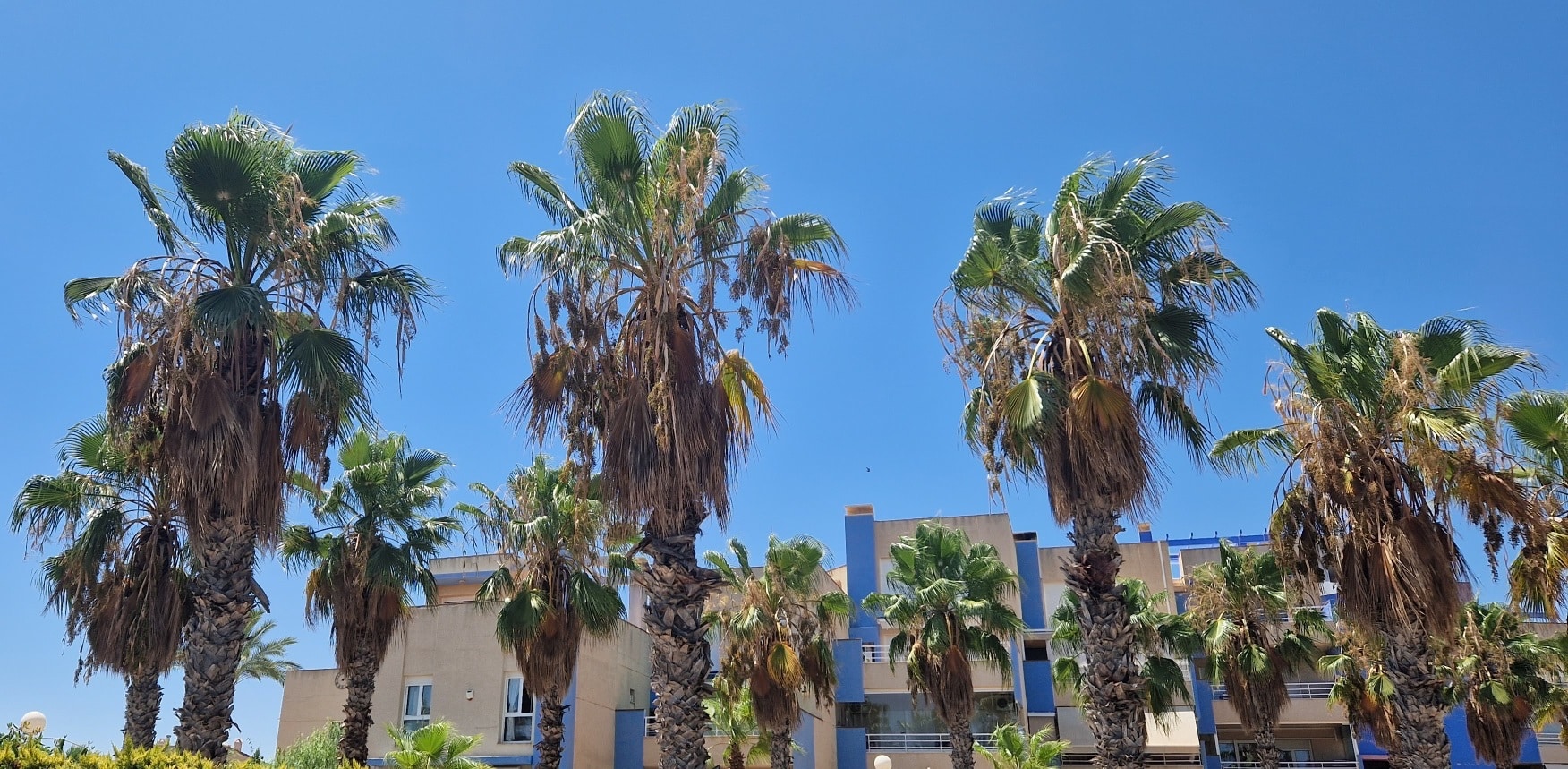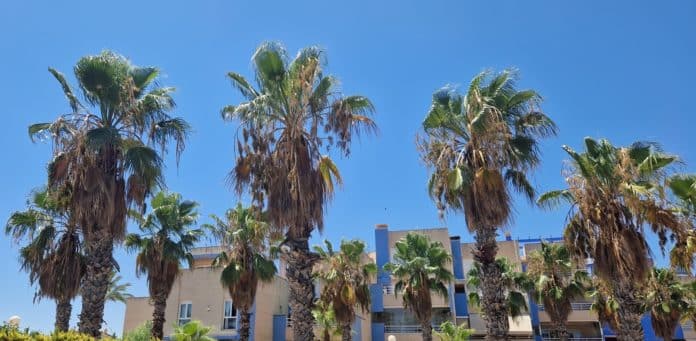Street trees in urban areas are important. They provide a human scale to our surroundings and soften the mind numbing linearity of vast expanses of concrete. They clean the air we breathe and provide much appreciated shade. On an often unconscious level they impact our feelings about a street or neighborhood’s economic status and safety, which is to say its desirability as a place to walk or live.
However, in many parts of the Southern Costa Blanca, there have been reports in recent weeks citing damage to people and property caused by fallen palm trees that have broken under the weight of their fronds or fruit, and whilst we can all accept how wonderful they are to look at when suitably pruned many would agree that they actually serve no purpose whatsoever, they provide no shade and they forever drop their seeds on anything that lies below. Standing next to a palm tree unfortunately affords about the same amount of shade as standing next to a telephone pole
They can also be dangerous, dirty and ugly when left untended or only occasionally maintained, and in many areas of the Orihuela Costa this is the situation that many of them are now in.
Only a few short years ago the palms would be tended twice a year. They would be treated, pruned and sprayed as they presided majestically over our streets. They looked positively regal as they provided a royal Mediterranean welcome to visitors.
But now, like so much else of the Orihuela Costa, they have been allowed to become overgrown, there are far too many for the local authorities to manage, they are causing damage to our pavements and to our roads and they create a variety of unnecessary hazards, many of which, for an elderly population, can be extremely difficult to manoeuvre.
In many roads an thoroughfares of Aguamarina there is a fully mature palm tree situated every 3 metres. Calle Agua, for example, is approximately 300 metres long, but it accommodates approximately 100 trees. This provides the street with almost one tree for every 3 metres of its length.
According to local experts, the recommended spacing interval for this type of tree is between 20 and 30ft. In C/Agua, and many other Orihuela Costa streets, therefore, there are 50 palm trees too many. If this were to be replicated across the coast the result would be a surplus of many thousands of trees, costing many hundreds of thousands of taxpayers euros to be maintained, much of which could so easily be saved or put to other and better uses.
Prior to the Covid outbreak pruning of the trees was carried out twice a year. Now it is rarely more frequently than once every 15 to 18 months, so the trees, and the streets and avenues that they line, look truly shambolic. These days the residents can actually get quite excited when they see the arborist, or ‘tree pruner’, arrive for an occasional visit, but unfortunately they are nowhere near often enough.
Over the last decade, there have been numerous accounts of “exploding” palm trees, in many parts of the world. Subsequently, the famous trees, which “go up like Roman candles,” have sparked rumours online that they either self-immolate or combust due to extreme heat. While neither of these speculations are true, many research scientists and fire department officials say that they pose a very real threat regardless – and could make the current fire season even more dangerous in than usual.









Maybe a timing thing, even the palm trees at Real Club de Golf Campoamor look a mess at the moment.